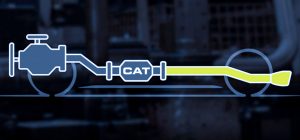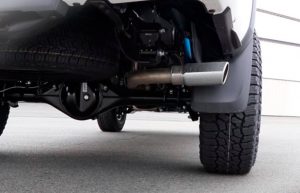MAGNAFLOW
The American company MAGNAFLOW started over 30 years ago with a small service in one of the states. During this time, it has become a leader in the USA and one of the world leaders in the production of automotive exhaust systems. This happened because the company’s specialists were constantly working on the design of the exhaust system in order to increase its power and environmental friendliness, improving the sound of the Exhaust System. At the same time, the production technology and infrastructure were developing. At present MAGNAFLOW is striving to create truly unique exhaust systems based on extensive theoretical and practical research. The company is ISO-9001 certified, all its modern products are made in the USA using high technology, the latest innovative techniques, high-quality materials, cooperation with leading American, European, and Japanese manufacturers. All new products are tested in a huge technical center of research and development equipped with dynamometers and benches before going into production.
MAGNAFLOW’s superior product performance allows them to pass rigorous testing in the United States, winning awards and prizes. Due to the excellent reputation earned in the USA, the perfect price/quality ratio, sales both through dealer networks and ordinary car selling stores today MAGNAFLOW is a world-famous brand the products of which are widely represented in many European countries. MAGNAFLOW exhaust systems are almost perfect, with high power, excellent soundproofing, reliability, and aesthetic appearance. All of them increase power and thus noticeably reduce fuel consumption. Use in the construction of the muffler perforated stainless steel core, mesh film, and filling with a special acoustic fiber makes it possible to achieve the “correct” (deep and velvety) exhaust sound, as well as a long life of the system without sound deterioration.
Why This Firm?
MAGNAFLOW products are mufflers, muffler tips, catalytic converters, resonators, direct converters, feedback systems, etc. for almost all types of vehicles. A wide range of MAGNAFLOW exhaust system elements allows us to offer our customers both ready-made exhaust systems and to assemble (custom) for them unique systems for a specific task.
Tacoma: Magnaflow 3 In. MF Series Single Exhaust System Review
- Produces a smooth, deep sound. This exhaust system allows your Tacoma to produce a smooth, deep sound that is truly pleasing to the ears of every Toyota truck owner.
- Increased power and torque. This exhaust system features 3-inch diameter pipes that provide unrestricted exhaust flow, resulting in increased power and torque.
- Made of stainless steel. This ensures that your exhaust system will deliver outstanding performance without rust or breakage.
- Lifetime Construction Warranty. Magnaflow guarantees that their exhaust systems are free of defects in material and workmanship. Therefore, they provide a lifetime construction warranty on this product.
How the Exhaust System Works

The exhaust system of the diesel engine has some peculiarities: Exiting the cylinders, the exhaust gases enter the exhaust manifold. The temperature of the diesel engine exhaust gases varies in the range of 500-700 C. Then they go to the turbocharger, which carries out the supercharging. After that, the exhaust goes through an oxygen sensor and into a particulate filter, where the harmful components are removed. Finally, the exhaust passes through the car’s muffler and out into the atmosphere.
Tuning the Exhaust System

The modification of the exhaust system, if it’s not done for “beauty” purposes, has two main goals. The first is to reduce the so-called back pressure in the exhaust system, allowing you to increase engine power without changing the volume. To achieve this goal, it is necessary to modify the system from beginning to end. Backpressure is the resistance that the walls of the pathway offered to the flow of exhaust gases. To reduce it, the usual manifold is changed to an equal-length manifold, that is, one in which the distance that the gas flows from each of the four cylinders on the way to the intake pipe is the same.
In order not to create bottlenecks further along the path of the gas flow, all the connecting pipes, including the intake pipe, are replaced with new ones of larger diameter. In addition, the path is straightened out as much as possible. As a result of all these operations, the gas stream gets the opportunity to pass the entire duct almost unobstructed. Unfortunately, after modification, the possibilities of the “muffler” to muffle something practically disappear, and the system becomes very noisy.
That’s It!
The second direction is heat removal from the engine compartment. Pipes of the equal-length manifold, the most heated part, are covered with special thermal spraying, which has low thermal conductivity. This reduces the heat generation in the under-hood, which positively affects the efficiency of the injection system.



Add Comment